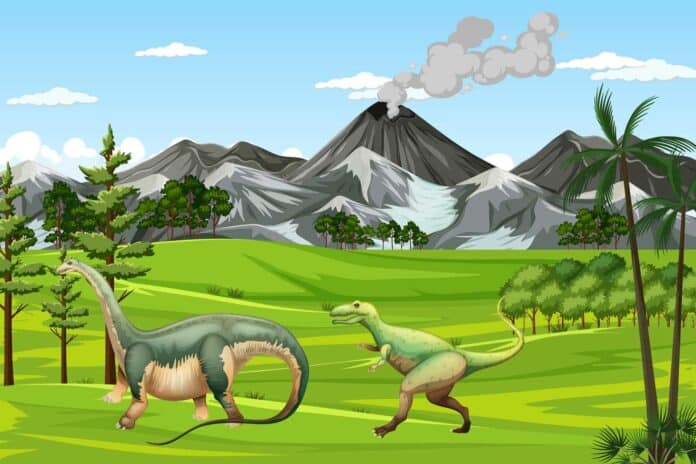What caused the extinction of dinosaurs on Earth?
A new study suggests that a meteorite plummeting to Earth is only part of the story. The climate change triggered by massive volcanic eruptions may have set the stage for the extinction of the dinosaurs.
Scientists from McGill University‘s Department of Earth and Planetary Sciences studied the lava eruptions of the Deccan Traps, a large, rocky plateau in Western India created by molten lava. About 65 million years ago, it may have been a significant factor in the cooling of the global climate, erupting a massive one million cubic kilometers of rock.
Scientists worldwide were involved in the project; they were hammering out rocks in the Deccan Traps and studying samples in Sweden and England.
In the laboratory, scientists calculated the amount of sulfur and fluorine that large-scale volcanic eruptions contributed to the atmosphere during the 200,000 years preceding the demise of the dinosaurs.
Surprisingly, they discovered that the sulfur emission might have caused a volcanic winter and a worldwide temperature decrease.
Prof. Don Baker, a McGill University’s Department of Earth and Planetary Sciences professor, said, “Our research demonstrates that climatic conditions were almost certainly unstable, with repeated volcanic winters that could have lasted decades before the extinction of the dinosaurs. This instability would have made life difficult for all plants and animals and set the stage for the dinosaur extinction event. Thus, our work helps explain this significant extinction event that led to the rise of mammals and the evolution of our species.”
Finding clues in old rock samples was a challenging task. In reality, a novel method created at McGill made deciphering the volcanic past easier. As a complicated blend of chemistry and experimentation, the technique for predicting fluorine and sulfur releases is similar to preparing pasta- boiling water, adding salt, and then the pasta. The pasta absorbs some, but not much, of the salt from the water.
Likewise, some elements become trapped in minerals as they cool following a volcanic eruption. With this new technology, scientists could estimate the amounts of sulfur and fluorine in rock samples, just as they could calculate the salt concentrations in the water used to cook the pasta by evaluating the salt content. Using this information, scientists could determine how much of these gasses were produced during the eruptions.
Scientists noted, “The study is a step forward in piecing together Earth’s ancient secrets and pave the way for a more informed approach to our own changing climate.”
Journal Reference:
- Sara Cellegaro, Don Baker, Paul Renne et al. Recurring volcanic winters during the latest Cretaceous: Sulfur and fluorine budgets of Deccan Traps lavas. Science Advances. DOI: 10.1126/sciadv.adg8284
